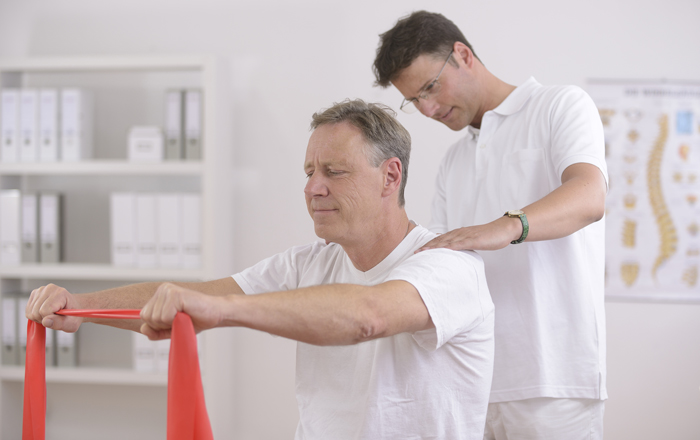Understanding the Need for Drug-Free Pain Treatments
With over 100 million Americans reportedly suffering from chronic pain every year, and doctors having limited time to see each patient, prescriptions are often the most convenient remedies.
However, the fact that they are convenient and often fast-acting does not necessarily make them the best choice for long-term pain relief. Prescription opioids are incredibly effective at treating the acute pain that follows major surgeries, car accidents, end-stage cancer, and other conditions, but they can be problematic for chronic pain due to the threat of tolerance, addiction, and overdose.
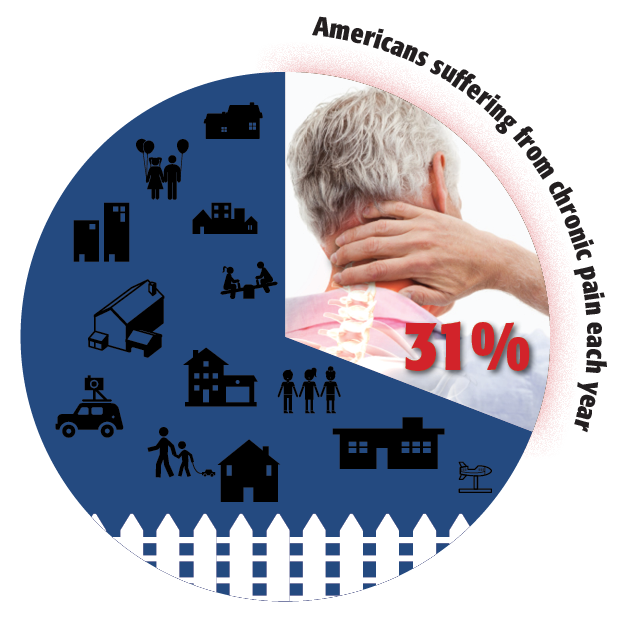
Why Prescription Opioids Are Potentially Dangerous
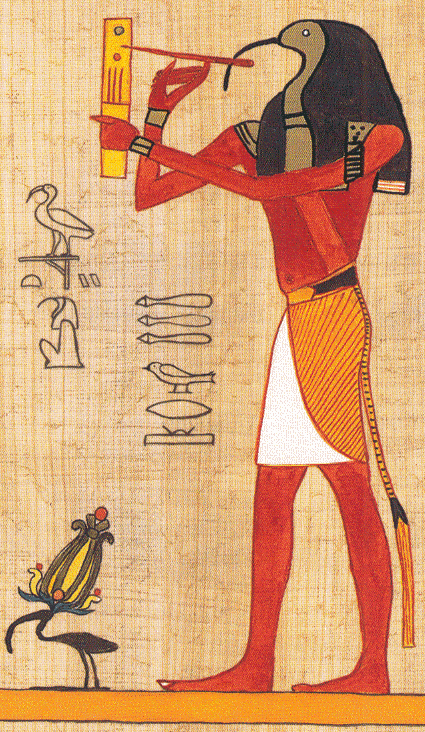
Opioids are among the world’s oldest drugs, with usage dating back many millennia to ancient Mesopotamia.
Morphine, the most active substance found in the poppy plant (where all opioids are derived from), is named after the Greek god of dreams, Morpheus.
It has been known for several centuries that opium, morphine, and other opiates and opioids are very effective at treating pain but also highly addictive.
In addition to the threats of addiction and overdose, opioid use can lead to:
- Drowsiness
- Nausea
- Vomiting
- Confusion
- Dizziness
- Constipation
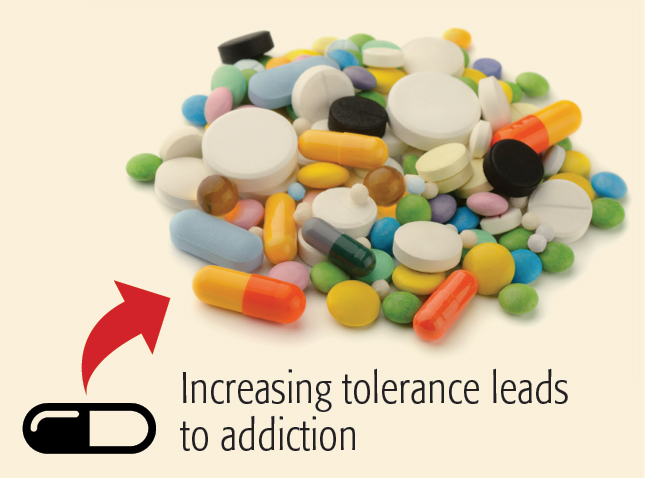
For people struggling with severe pain following an operation or a serious injury, opioid use may not only be helpful, but it might also be necessary. Some types of pain are unbearable, and it would be cruel to force people in agonizing pain to power through it without some pharmaceutical assistance. However, when pain persists for months at a time, it is then classified as chronic pain. Continuing to treat chronic pain with prescription opioids may lead to tolerance and then addiction.
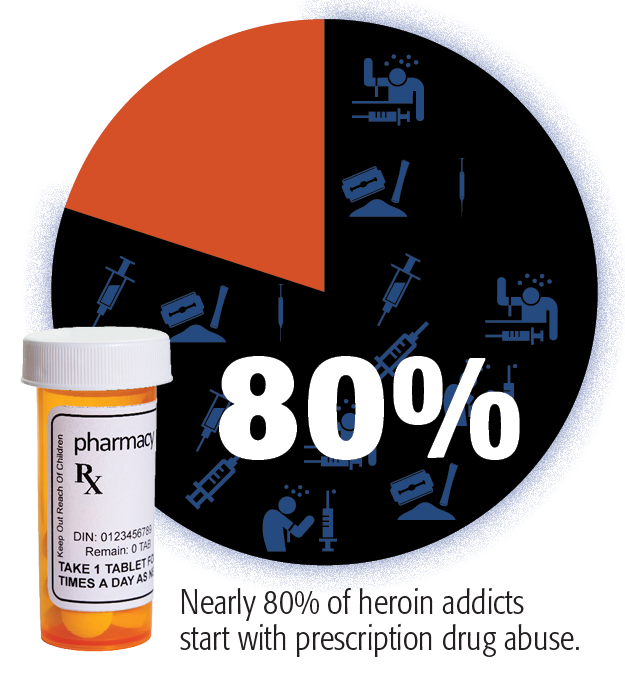
A person develops tolerance when the same dosage of his or her medication no longer has the usual level of impact. This causes users to consume more of the prescription drug to find relief from pain. As this cycle continues, the user becomes more and more dependent on the drug, potentially leading to an eventual overdose or a switch to heroin.
In 2014, a record number of Americans died from drug overdoses, with more than 60 percent of them involving opioids. From 2000 to 2014, nearly 500,000 people died from drug overdoses and 78 U.S. citizens died every day from an opioid overdose.
What’s worse is that nearly 80 percent of heroin addicts started off abusing prescription opioids, according to aggregated national heroin usage data.
Heroin and Prescription Opioid Abuse in America
- 75 percent of high school heroin users started with prescription opioid abuse.
- From 1999 to 2013, there was a 303 percent increase in deaths involving prescription opioids.
- In 1991, doctors wrote 76 million prescriptions for opioids. By 2013, that number had climbed to 207 million.
Some research has drawn a connection between substance use disorders and reports of chronic pain. A 2004 study found that 37 percent of patients in methadone maintenance treatment programs and 24 percent of patients admitted for addiction treatment also suffered from severe chronic pain.
The same study showed that 80 percent of the methadone management patients and 78 percent of the addiction recovery patients reported some level of pain and extended duration. Quite obviously, this population of chronic pain patients may be prone to abusing prescription opioids, making it a risky treatment strategy.
How Drug-Free Options Can Help
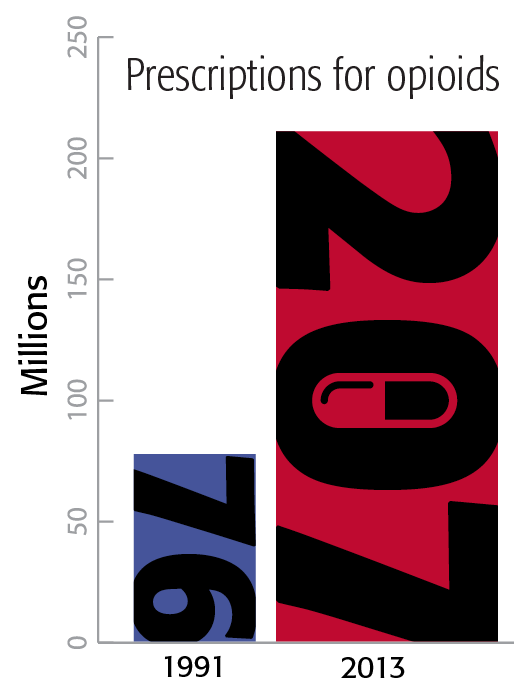
Pain relief is not only found in a bottle. There are multiple drug-free options that provide much safer relief to ongoing pain.
Though there are times in which the use of prescription opioids may be necessary, patients and physicians should be actively seeking to use drug-free options over the long haul to avoid any of the health complications associated with opioid use.
The Centers for Disease Control and Prevention (CDC) released guidelines urging prescribing physicians to move away from prescribing opioids and rely more on drug-free options. Based on the CDC guidelines, patients should choose non-opioid alternatives in the following scenarios:
- When the Risks Outweigh the Rewards: If you’re dealing with long-term, chronic pain, it’s best to try drug-free options first. Only use opioids when absolutely necessary or after drug-free options have failed. Opioid use may also be unadvisable if you have a substance use disorder.
- When Pain Is Related to Lower-Back Pain, Hip/Knee Osteoarthritis, or Fibromyalgia: The CDC has recommended the use of physical therapy for the treatment of these conditions.
- When Opioids Are Prescribed: Even when a physician has prescribed opioids for legitimate reasons, the CDC recommends using the lowest effective dosage in combination with non-opioid therapies.
- When Pain Persists for 90 Days or More: For chronic pain, opioid use is the least favorable treatment strategy.
Several drug-free pain management options are worth exploring for people who wish to avoid opioid use. In many cases, when a person remains committed to these strategies, they can produce positive long-term results.
Exercise & Nutrition
A physical therapist or personal trainer can help you strengthen your overall body and focus on specific areas of need.
Meditation
Meditation and other mindfulness techniques have been utilized for pain relief long before the advent of popular medicine, and current research shows that these types of alternative therapies are effective in relieving pain.
Yoga
A recent study by the National Institutes of Health (NIH) showed that yoga has the opposite effect on the brain that chronic pain does. Yoga has been shown to potentially reduce the perception of pain.
Chiropractic Therapy
Regular chiropractic care can reduce back and neck pain while also improving sleep, flexibility, mobility, and posture.
Acupuncture
This ancient healing technique has been practiced for thousands of years. Some research has shown acupuncture can be effective in treating back and neck pain while also preventing migraine headaches.
Massage Therapy
While there is no empirical evidence that massage therapy is effective in treating all types of pain, many studies have shown that it may be helpful for lower back pain, headaches, and neck pain.
Explore Your Options at Seaside Palm Beach

If you’re a person stuck in the cycle of unending, excruciating pain and subsequent prescription opioid use and abuse as treatment, it may be time to reexamine your options. Continuing down this path could lead to addiction, overdose, or the eventual use and abuse of heroin instead. The last thing you want is for your pain treatment to become an addiction.
However, if you or someone you care for has already fallen into addiction due to pain treatment, our pain-management specialists at Seaside Palm Beach are eager and standing by, ready to help find the right holistic addiction treatment program.
You don’t have to choose between a life of pain or a life of opioid addiction—allow us to show you another way. We offer several drug-free pain management options as well as recovery strategies, like cognitive behavioral therapy (CBT), for people struggling with opioid withdrawal and chronic pain simultaneously. Contact us today at 1-888-997-3274 to learn more about how we can help.
Personal Accounts: Chronic Pain Chronicles
Luxury Drug Rehab and Managing Chronic Pain
I have suffered from chronic pain for the majority of my life; never did I think I would be checking in to a luxury drug rehab due to my chronic pain, however. Due to some congenital disorders, pain has been a part of my daily routine for many years now. As I get older, it gets worse.
So, as you may imagine, as I got older, my pain medication intake increased exponentially. At any given moment, I was a walking cabinet of Vicodin, Valium, Percocet, Cymbalta, OxyContin, Xanax, and many more – quite a poster child for pain medication addiction, actually.
So many medications failed me. So many worked and then my body built a tolerance to the point where they began failing too. My drug prescriptions made me feel like I was walking a tightrope with debilitating pain on one side and tolerable pain on the other side. I kept meeting with different psychiatrists. I knew there was a reason for my pain and that prescriptions were critical to my everyday functionality, but I had a nagging suspicion that I was consuming too much medication regardless of the fact that it was all prescribed. I desperately wanted to scale down my medication intake without scaling up my pain.
One day while catching up with one of my dear friends who suffers from similar ailments, she told me that she had just been treated at Seaside Palm Beach’s luxury drug rehab. I was surprised and curious to know more about that process. First, she reminded me that both of us were very fortunate in life that we could afford to go to a luxury drug rehab and obtain the best treatment available. Then she got into explaining how they created an individual treatment plan for her with everything ranging from acupuncture treatments to regular sessions with a professional nutritionist. She had a tailored therapeutic exercise program catered to her needs and capabilities. She met one-on-one with professionals for her therapy sessions who were specifically trained in chronic pain management.
You don’t have to choose between a life of pain or a life of opioid addiction – allow us to show you another way. We offer several drug-free pain management options as well as recovery strategies for people struggling with opioid withdrawal and chronic pain simultaneously. Contact us today at 1-888-997-3274 to learn more about how we can help.
